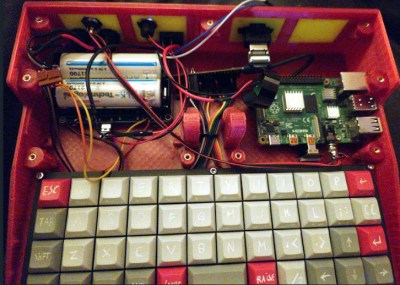There are some that enjoy the human element of a musical performance, delighting in the unique way an artist teases the desired sound from their instruments. Then there are those of us who listen to random bleeps, bloops, and buzzes tortured out of some crusty sound chip pulled from an 8-bit computer. It’s all very subjective.
It seems to us that the Jangle Box, created by [Rich Bernett], lands somewhere in the middle. A human is still playing the instrument, but they aren’t directly touching the strings. Instead, buttons and a potentiometer on the front of the device are used to control four small hobby motors that slap their respective strings with what appears to be the remnants of plastic propellers — we’d guess these motors were pulled from cheap personal fans. Standard guitar tuner knobs can be used to adjust the tension of each string, providing further control over the sounds produced by the device.
 In the video below, [Rich] briefly explains the operation of the Jangle Box, and then launches into a performance of sorts. The goal here really isn’t to “play” the instrument in the traditional sense. Rather, he records the various noises it produces, normalizes them, and sorts them into a full octave of notes so he can use them in future compositions. The last few minutes of the video contain some electronic beats made up of the samples created from the Jangle Box.
In the video below, [Rich] briefly explains the operation of the Jangle Box, and then launches into a performance of sorts. The goal here really isn’t to “play” the instrument in the traditional sense. Rather, he records the various noises it produces, normalizes them, and sorts them into a full octave of notes so he can use them in future compositions. The last few minutes of the video contain some electronic beats made up of the samples created from the Jangle Box.
If you’re one of his Patreon supporters you can download the sample pack yourself, otherwise, you’ll have to make your own version of the instrument to get your hands on that electro-tangy sound.
This isn’t the first original [Rich Bernett] musical creation to grace these pages, back in 2020 we covered his Cassettone synth.
Continue reading “Jangle Box Plucks Strings At The Press Of A Button”




















